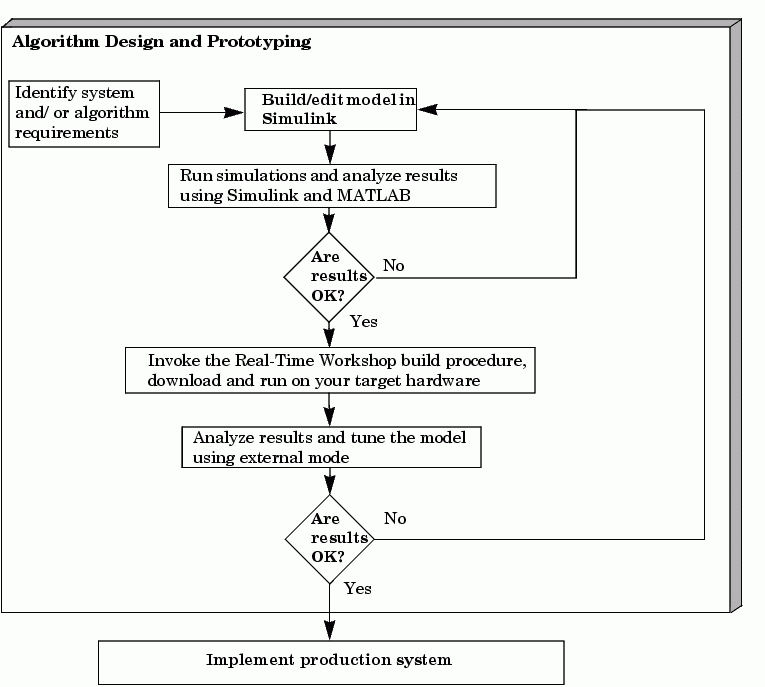

| Real-Time Workshop |   |
Key Aspects of Rapid Prototyping
The figure below contrasts the rapid prototyping development process with the traditional development process.
Figure 1-2: Traditional vs. Rapid Prototyping Development Processes
The traditional approach to real-time design and implementation typically involves multiple teams of engineers, including an algorithm design team, software design team, hardware design team, and an implementation team. When the algorithm design team has completed its specifications, the software design team implements the algorithm in a simulation environment and then specifies the hardware requirements. The hardware design team then creates the production hardware. Finally, the implementation team integrates the hardware into the larger overall system.
This traditional development process takes so much time because algorithm designers often do not have access to the hardware that is actually deployed. The rapid prototyping process combines the algorithm, software, and hardware design phases, eliminating potential bottlenecks by allowing engineers to see results and rapidly iterate solutions before building expensive hardware.
Automating Programming
Automatic program building allows you to make design changes directly to the block diagram, puttting algorithm development (including coding, compiling, linking, and downloading to target hardware) under control of a single process:
The next diagram illustrates the flow of this process.

Figure 1-3: The Rapid Prototyping Development Process
Highly productive development cycles are possible due to the integration of Real-Time Workshop, MATLAB, and Simulink. Each component adds value to your application design process:
 | The Rapid Prototyping Process | Rapid Prototyping for Digital Signal Processing |  |